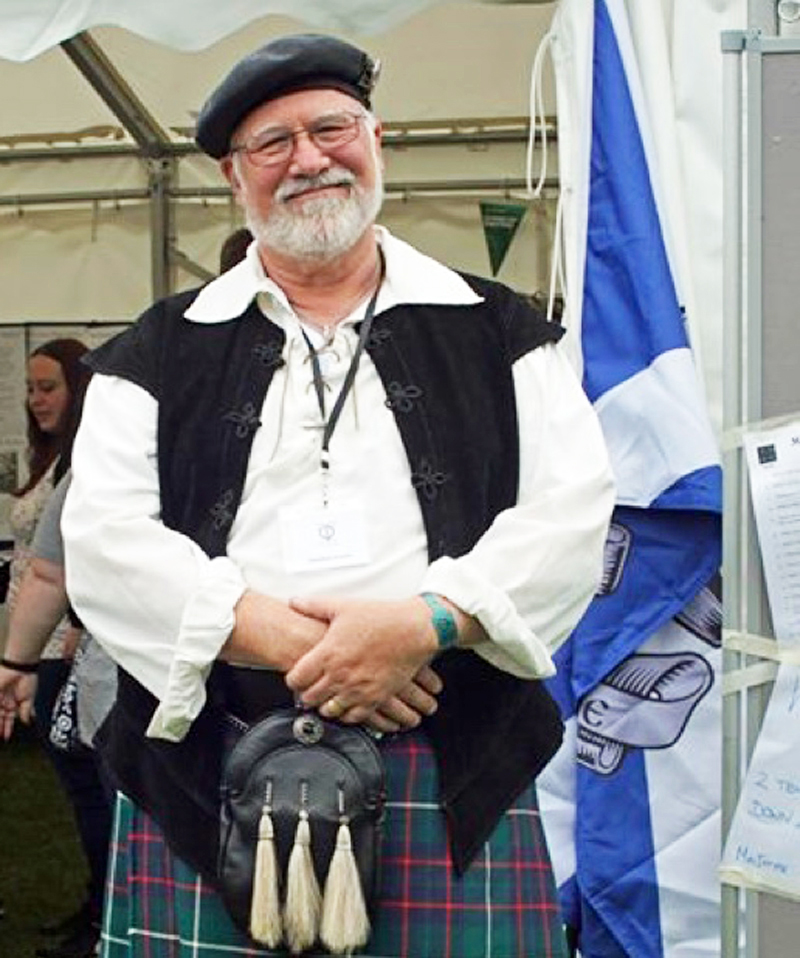Slavery Among the McIntires

February is Black History Month, and McIntire history has contributed to it.
In his July 1776 will, shipbuilder Captain John McIntire Jr. of York, Maine (one of my ancestors) directed that upon his death, his “servant [slave] woman named Dinah, who hath been a faithful servant, shall be set at liberty and be free from any further servitude.”
As it turned out, Dinah was either not set free, or she had no other option for survival but to remain a “servant” in her elder years. After the death of her ship-building master John, instead of being set free, she was transferred to the household of a cousin, surveyor Alexander McIntire, where she later died, still in servitude. After Alexander’s passing, a son of that second household even tried to make a claim against his own father’s estate for the cost of caring for Dinah during her final 13 weeks of life.
Dinah was not the only enslaved person owned by the McIntires of York, Maine. In 1736, Keziah McIntire, daughter of Micum McIntire Jr., married Joseph Came of York. She subsequently inherited enslaved people from her father-in-law Samuel Came, who was prominently involved in slavery in the community. Samuel had, for instance, been on the committee that selected and purchased an enslaved African to provide labor for the community’s minister. In her own 1773 will, Keziah bequeathed an enslaved man named Prince to her two youngest daughters Mary and Jane.
In his 1983 genealogy, “Descendants of Micum McIntire,” Robert Harry McIntire asserts that Patience Came (Keziah McIntire Came’s oldest daughter) inherited from her grandfather Samuel Came an enslaved man named Sharper. In McIntire’s genealogy, Sharper was “said to have lived to be almost 100 years old, and to have been the last slave [alive who had been] owned in New England.” While that may have been the kind of historical invention or exaggeration typical of the Colonial Revival Movement sources from which it was taken, it remains a troubling possibility. The Massachusetts Supreme Court (Massachusetts included Maine until 1820) declared slavery unconstitutional in 1781. It took at least another decade for slavery to be phased out in Massachusetts and its Maine territory.
According to “Saco Valley Settlements and Families,” 1895 (p. 551), it was Sharper’s wish that, after his death, he be buried in the garden of his former master Samuel Came, on Cider Hill in Scotland Parish, a section of York settled in the mid-late 1600s by former Scottish prisoners of war. With the irony that history often conveys on fallible human beings, those Scots—captured at battles in 1650 and 1651—had been sent to the New England colonies in chains in the holds of two ships, and then had to work off the cost of their luxurious passage in compelled 6-8-year indentures, sold upon their arrival. Having their 3rd and 4th generation descendants own enslaved human beings is sadly ironic.
Sharper’s wish to be buried in his master’s garden was reported as having been granted, and “suitable stones mark his grave.” Possibly Sharper had loved the solitude and sense of accomplishment that gardening provided him as an ‘escape’ from his enslaved status, and/or he had fully inhabited his role as a good and faithful servant, or his ending had been written by others to make him appear that way.
Early Southern Maine was not separate from the slave trade. There were single-purpose slave ‘breeding farms’ in the North as well as in the South. From “The History of Wells and Kennebunk,” Bourne, 1875, pp. 406-407:
“The old Weare house in York, which stood about three quarters of a mile east of Freeman’s tavern, and which was taken down a few years ago [before 1875], was at one period a slave factory. Here were several negro families, and many negro children were sent from it to market. How this traffic was managed we are unable to state. But we are well assured that many scenes were witnessed there, on such occasions, as would make the heart ache.”
The powerful economic and social emphasis placed on the bestial practice of using enslaved black American women agriculturally, as “breeders” and the long-term traumatic impacts of that practice on those women and the social structure of black American families is a neglected aspect of American history that is only beginning to be acknowledged and studied.
Micum McIntire fought for what he understood to be Scotland’s right to determine its own future–Oliver Cromwell and the English Parliament disagreed, and Micum was captured and sent across the Atlantic in chains as a result. It is deeply ironic and saddening to know that among his descendants were people who owned other human beings.
*******
The most definitive and comprehensive current source for information on MacIntyres in general is the “Clan MacIntyre: A Journey Into the Past,” Martin L. MacIntyre, Regent Press, Berkeley, CA, 2018, second edition. Copies may be purchased by contacting the author at martin.macintyre@juno.com .
The definitive genealogy is “Descendants of Micum McIntire,” Robert Harry McIntire, revised edition, 1983, Bookcrafters, Chelsea, MI. This is often referred to as the “Red Book” among Micum descendants because of its bright red cover. New copies may be obtained through the Gift Shop on this website: https://micummcintireclanassociation.org/shop/?product-page=2. Used copies can still be obtained from time to time through online booksellers.
Those interested in pursuing their own genealogical connections to Micum McIntire may submit question through this website at: https://micummcintireclanassociation.org/micum-mcintire-genealogy-questions/
Comments are Closed